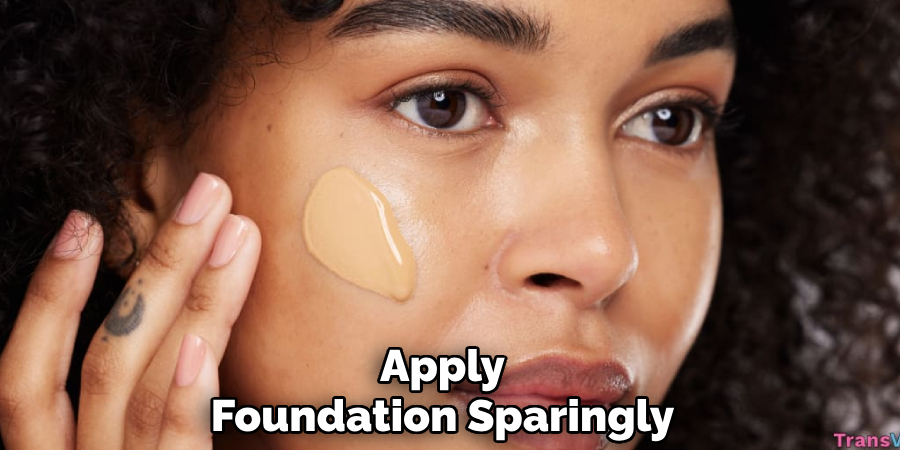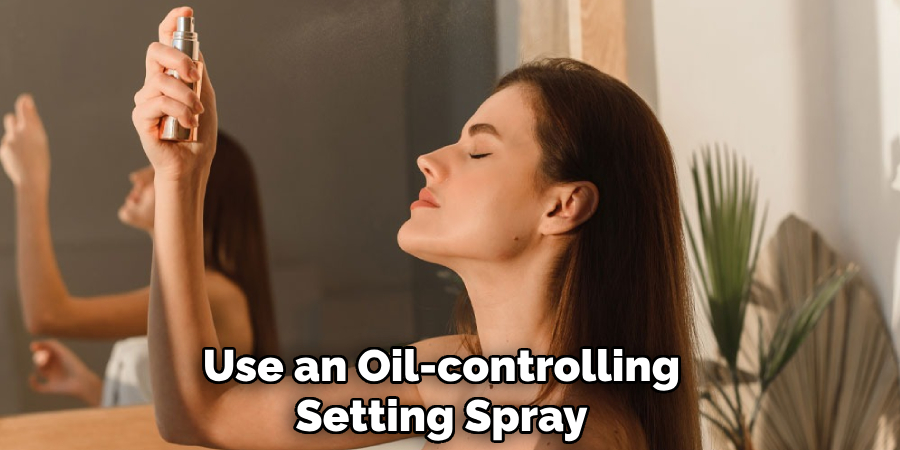Are you tired of your makeup sliding off your face or looking shiny halfway through the day? If you have oily skin, this may be a common struggle. But fear not, with the proper makeup routine and products, you can achieve a flawless look that lasts all day.

Regarding makeup, oily skin can present unique challenges, such as excess shine and makeup that doesn’t stay in place throughout the day. However, with the right techniques, tools, and products, you can achieve a lasting flawless look. This guide on how to do makeup for oily skin will walk you through the essential steps to help you prepare your skin, choose the right makeup, and ensure your look remains fresh and balanced.
By following these tips on foundation for oily skin, you can confidently tackle the struggles of oily skin and create a makeup routine that works for you.
What Are the Benefits of Oily Skin?
Before we discuss the specific tips for makeup application, let’s appreciate the benefits of oily skin. While it can sometimes be frustrating, there are some advantages to having an oily complexion.
First and foremost, oily skin tends to age more slowly than dry or combination skin. This is due to the natural oils in your skin keeping it moisturized and preventing fine lines and wrinkles from forming as quickly.
Additionally, people with oily skin tend to have a natural glow and radiance to their complexion. The excess oil can give a dewy finish many strive for with highlighters and illuminating products.
What Will You Need?
- Gentle cleanser
- Toner
- Oil-free moisturizer
- Clay mask (optional)
- Blotting papers or powder (optional)
- Sunscreen
Once you have identified oily skin, using the right products in your skincare routine is essential.
9 Easy Steps on How to Do Makeup for Oily Skin
1. Start with a Clean Face
Begin by thoroughly cleansing your face with a gentle cleanser for oily skin. This step is essential to remove excess oil, dirt, and impurities that can clog pores and lead to breakouts. Use lukewarm water to rinse your face, as hot water can strip the skin of essential moisture, causing your sebaceous glands to produce even more oil.

Pat your skin dry with a clean, soft towel instead of rubbing it, preventing irritation. A clean and refreshed face provides the ideal canvas for the next steps in your makeup routine.
2. Use a Mattifying Primer
A mattifying primer is a must-have for those with oily skin, as it helps to control shine and create a smooth, matte base for your makeup application. Apply a small amount of primer, focusing on areas prone to excess oil, such as the T-zone (forehead, nose, and chin). Gently blend it with your fingers or a makeup sponge, ensuring even coverage.
This step reduces the appearance of pores and helps your makeup stay in place longer, preventing it from sliding or separating throughout the day. A good primer sets the stage for flawless application.
3. Choose an Oil-Free Foundation
The proper foundation is crucial for achieving a shine-free look that lasts all day. Opt for an oil-free or matte foundation formula that suits your skin type. These foundations are designed to control oil and provide a smoother finish without clogging pores. Apply the foundation evenly using a makeup brush, sponge, or clean fingers, starting from the center of your face and blending outward for seamless coverage.
Build the product gradually in areas requiring more attention, ensuring a natural and even complexion. An oil-free foundation not only keeps excess oil at bay but also enhances the wear time of your makeup, making it a perfect choice for oily or combination skin.
4. Apply Foundation Sparingly
When applying foundation, less is often more to achieve a natural look. Start with a small amount of product, which allows for better control and prevents the foundation from appearing cakey or heavy. Focus on blending evenly into the skin, ensuring no harsh lines around the jawline or hairline. Use downward strokes for smoother application, particularly if you have fine facial hair, as this helps the product to sit evenly on the skin.
For areas requiring higher coverage, such as redness or blemishes, layer the foundation lightly instead of applying a thick coat all at once. This technique provides a polished finish and reduces the risk of clogging pores or emphasizing textured areas.

5. Set Your Foundation with Powder
To ensure your foundation stays in place throughout the day, set it with a lightweight translucent or setting powder. Using a fluffy brush, lightly dust the powder over areas prone to excess oil, such as the T-zone.
This step helps to control shine and locks in your foundation, creating a smooth and long-lasting base for the rest of your makeup. Remember, less is more—avoid over-powdering to maintain a natural finish.
6. Focus on Long-Wear Products
When selecting makeup products, prioritize formulas designed for long-lasting wear to keep your look fresh throughout the day. Look for foundations, concealers, and lipsticks with labels such as “long-wear,” “24-hour,” or “transfer-proof” to ensure durability.
Waterproof and smudge-proof options benefit eyeliner and mascara, especially in humid or high-activity conditions. These products are formulated to withstand sweat, oil, and environmental factors, making them ideal for extended wear. To further enhance longevity, consider using a setting spray to seal your makeup in place and reduce the need for touch-ups.
Step 7. Use an Oil-Controlling Setting Spray
Using an oil-controlling setting spray is crucial for ensuring your makeup stays intact throughout the day, especially for those prone to oily skin. These sprays not only help to lock in your makeup but also work to minimize shine by absorbing excess oil. Look for setting sprays for oil control, often labeled as matte or long-wear formulas.
Applying a fine mist after completing your makeup creates a protective barrier that keeps your look fresh and in place, even in humid or warm environments. Hold the spray at least 6-8 inches away from your face for best results and allow it to dry naturally.

8. Keep Blotting Papers Handy
Blotting papers are essential for anyone dealing with oily skin throughout the day. These portable sheets are designed to gently remove excess oil from the surface of your skin without disturbing your makeup. Simply press a blotting paper onto the areas of shine, such as your T-zone, to instantly mattify your complexion. They’re beneficial in humid conditions or during long days when oil buildup is more likely to occur. Keep a pack in your bag or desk for quick touch-ups whenever you need to refresh your look.
9. Refresh as Needed
It’s important to periodically check your makeup and make minor adjustments throughout the day to maintain a fresh appearance. Carry a compact mirror, setting spray, or translucent powder to fix any unevenness or fading quickly.
A light mist of setting spray can revive your makeup and give your skin a hydrated, dewy finish, while translucent powder helps to control shine without adding extra layers. Remember, the key is to enhance your natural features and feel confident, so touch up only as much as you think necessary.
By following these steps, you can achieve a stunning makeup look that lasts all day and beautifully complements your skin type.
5 Things You Should Avoid
- Skipping Primer: Avoid skipping primer, as it creates a smooth base for your makeup and helps control excess oil. Use a mattifying primer for oily skin to keep your foundation in place and shine-free.
- Using Heavy Cream-Based Products: Creamy or overly rich makeup products can clog pores and contribute to a greasy appearance. Opt for lightweight, oil-free, and non-comedogenic formulas to avoid exacerbating oily skin.
- Over-Powdering Your Face: While powder can help reduce shine, too much can lead to a cakey finish and settle into pores or fine lines. Instead, apply a light dusting of translucent powder to set your makeup, focusing only on oily areas.
- Neglecting Blotting Sheets: Avoid reapplying layers of makeup to control oil throughout the day. Instead, use blotting sheets to soak up excess oil and refresh your look without disturbing your makeup.
- Forgetting to Set Your Makeup: Skipping a setting spray can cause your makeup to smudge or break down on oily skin. Use a long-lasting, mattifying setting spray to lock in your look and prevent oil breakthrough.

Conclusion
Achieving a flawless makeup look for oily skin is all about preparation and the right techniques.
By starting with a clean, well-moisturized base and using products specifically designed for oil control, you can create a smooth canvas for your makeup. Remember to opt for mattifying and long-wearing formulas, apply makeup sparingly to avoid a cakey finish, and use targeted setting products like powders or sprays to lock everything in place. With these tips, you can confidently enjoy a long-lasting, shine-free look throughout the day.
Hopefully, the article on how to do makeup for oily skin has given you some useful tips and tricks to achieve a flawless, long-lasting look.
–
About the Author
Jane Hubbard is a passionate beauty expert with a wealth of experience in makeup, hair, and overall beauty techniques. After years of working as a hairdresser specialist, she followed her entrepreneurial spirit and started her own consultancy business.
Jane has always been driven by her desire to help others feel confident in their own skin, and she does this by sharing her knowledge, experiences, and practical beauty tips. Through her consultancy, she empowers individuals to embrace their unique beauty, offering tailored guidance that boosts both self-esteem and personal style.
Professional Focus
- Specializes in makeup, hairstyling, and beauty consulting.
- Provides personalized beauty advice, tips, and techniques to help individuals feel confident in their appearance.
- Dedicated to staying up-to-date with the latest industry trends and developments.
- Passionate about creating a comfortable and empowering experience for every client.
Education History
- University of Craft and Design – Bachelor of Fine Arts (BFA) in Woodworking and Furniture Design
- Woodworking Apprenticeships – Extensive hands-on training with skilled craftsmen to refine carpentry and furniture making techniques
- Online Courses & Masterclasses – Continued education in advanced woodworking techniques, design principles, and specialized tools
Expertise:
- Makeup artistry, hairstyling, and beauty consulting.
- Personalized beauty techniques to enhance confidence and self-expression.
- Educating clients on how to maintain their beauty routines at home.
